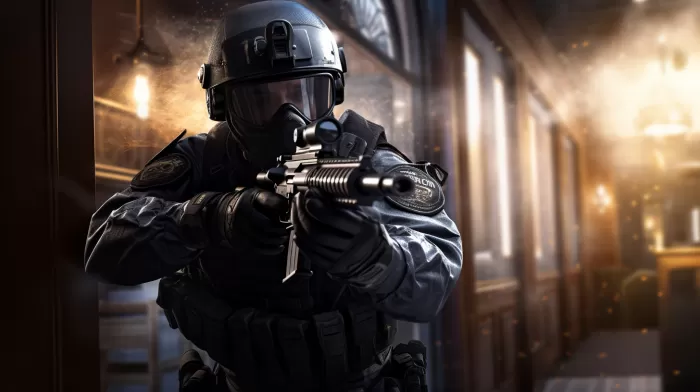In recent years, the brain damage sustained by football players due to the demands of their sport has been a subject of significant public concern and discussion. Now, new research reveals that certain practices in the law enforcement and military realms may also be causing neurological issues for those involved. The root of the problem? Low-level blasts (LLBs) used for forced entry.
What are low-level blasts and why are they harmful?
A low-level blast, also known as an explosive breaching charge, is a small explosive device typically used by law enforcement or military personnel to gain rapid and tactical entry into a building. The explosion creates a shockwave and debris, which can be incredibly harmful to anyone within the immediate vicinity of the blast.
The issue, according to brain researchers, is that when police officers and military personnel use LLBs for forced entry, they may be experiencing neurocognitive impairments and symptoms due to the blast-related pressure changes on their brains. In simpler terms, these individuals are suffering from concussions each time they blast their way into a building.
Evidence of brain damage
In a study examining the effects of these small explosions on the brains of 21 members of the New Zealand Defense Force, researchers discovered a “measurable degree of brain perturbation linked to LLB exposure”. This means that the soldiers’ brains showed signs of damage even during training with LLBs, before they ever utilized the technique in actual field operations.
This research is crucial in highlighting the need for better training practices and protective measures for those who work in law enforcement and the military, as well as raising awareness about this serious occupational hazard.
Potential long-term effects
A single concussion may not cause substantial harm or long-lasting damage, but repeated concussions can lead to a range of cognitive, physical, emotional, and behavioral effects. These include memory loss, difficulty concentrating, headaches, irritability, and even more severe consequences, like the development of neurodegenerative diseases such as Alzheimer’s or Parkinson’s.
Over time, this damage can affect not only the quality of life for those in these professions but also their ability to perform their job effectively, which may have broader implications for public safety.
Protecting our law enforcement and military personnel
So, what can be done to minimize the risk of brain damage caused by low-level blasts? There are several measures that can be taken by both the individuals involved and the organizations they work for.
- Education and training: Providing comprehensive education about the potential risks associated with low-level blast exposure, as well as proper training on how to handle and deploy these devices safely and effectively, is essential for reducing the likelihood of injury.
- Protective gear: Ensuring that law enforcement and military personnel have access to and consistently use appropriate protective gear, including helmets and specialized clothing designed to absorb some of the impact, can reduce the severity of injuries sustained during training and on the job.
- Improved technologies: Investing in research and development of new technologies and non-explosive methods for forced entry may ultimately prove to be the most effective route to mitigating the dangers associated with LLBs.
-
Ongoing monitoring: Establishing a system for regular monitoring and assessment of those exposed to low-level blasts can help in early identification of cognitive or neurological issues, allowing for timely intervention and support.
Conclusion
The use of low-level blasts in law enforcement and military operations presents a real risk of brain damage that should not be overlooked. By raising awareness about the dangers of LLBs, improving safety measures, and investing in innovative alternatives, it is possible to protect those who bravely protect and serve us each day. Their service should be recognized and valued, and taking steps towards ensuring their well-being should be a top priority for the organizations they represent and society as a whole.



